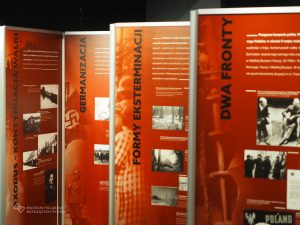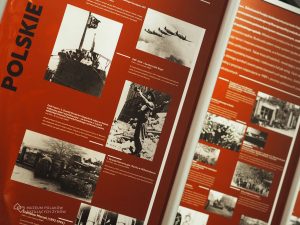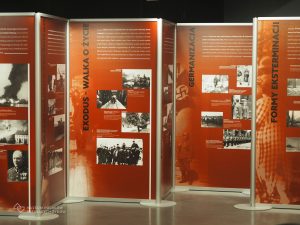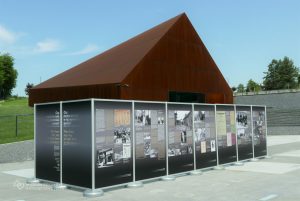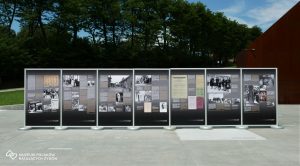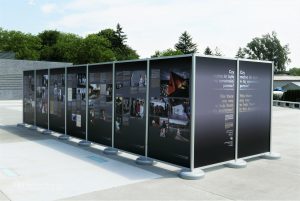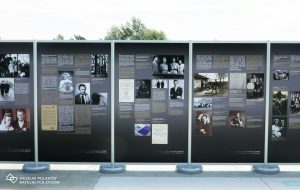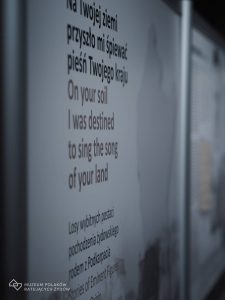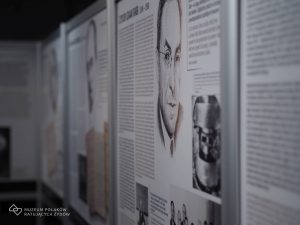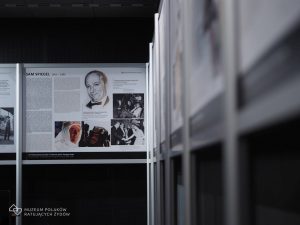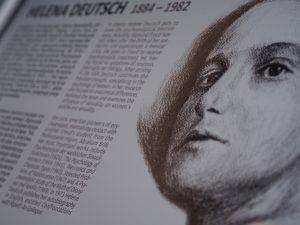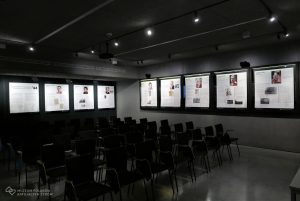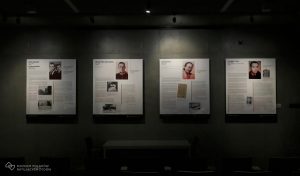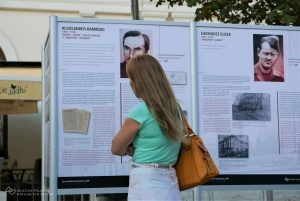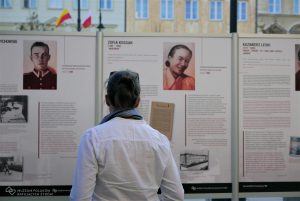Temporary Exhibition
Streng verboten. Rural Wielkopolska 1939-1945 1 July 2021 - 5 September 2021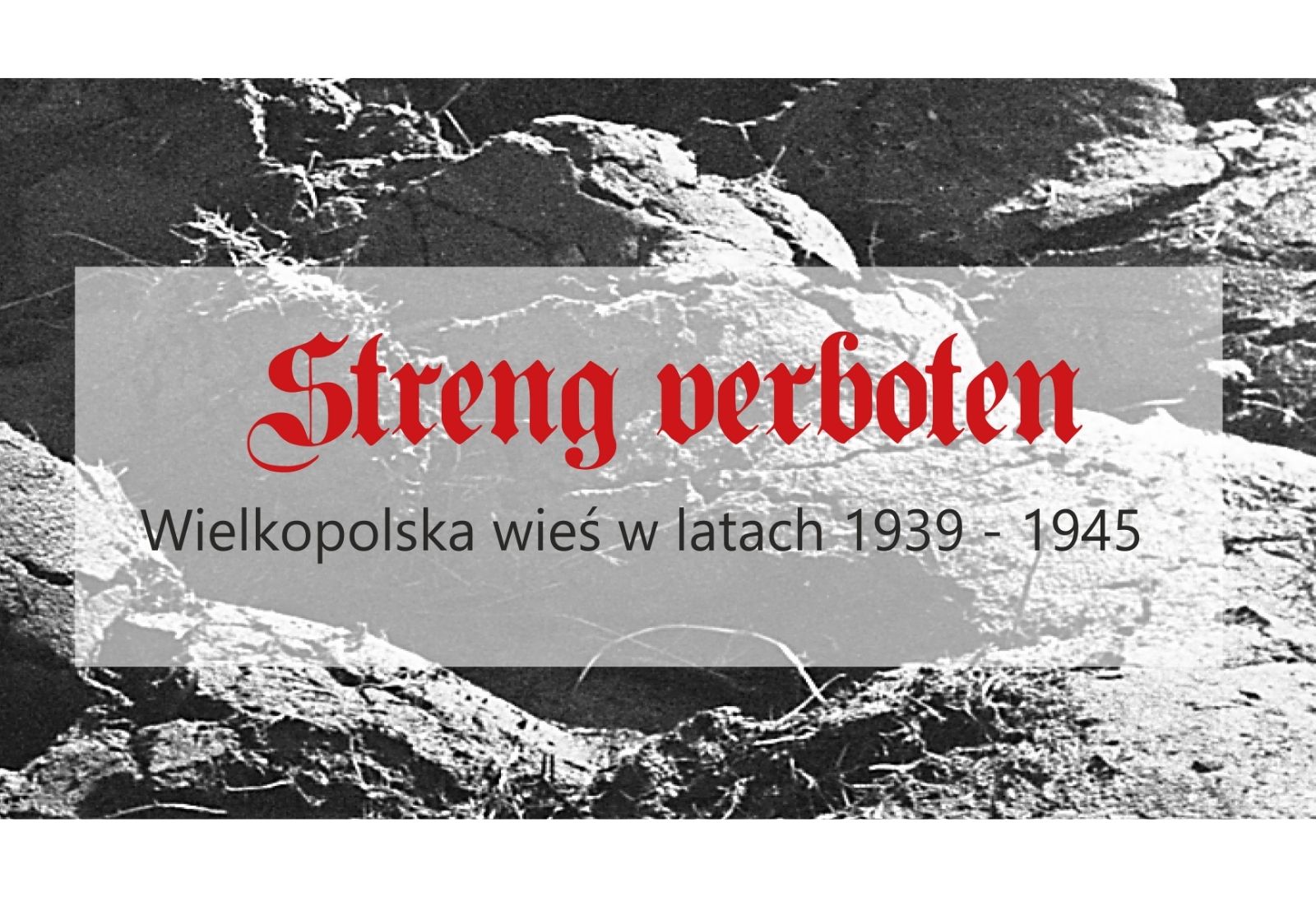
2020 marked the 75 anniversary of the end of World War II. The commemorate the event the National Museum of Agriculture and Agri-Food Industry in Szreniawa held a temporary exhibition dedicated to the history of rural areas and agriculture of Wielkopolska in the years of Nazi German occupation. The information presented in Markowa is the starting point for joint research of the Museum of Poles Saving Jews and the National Museum of Agriculture and Agri-Food Industry in Szreniawa.
Temporary Exhibition
German extermination camp in Bełżec. History and relics 25 May 2021 - 30 June 2021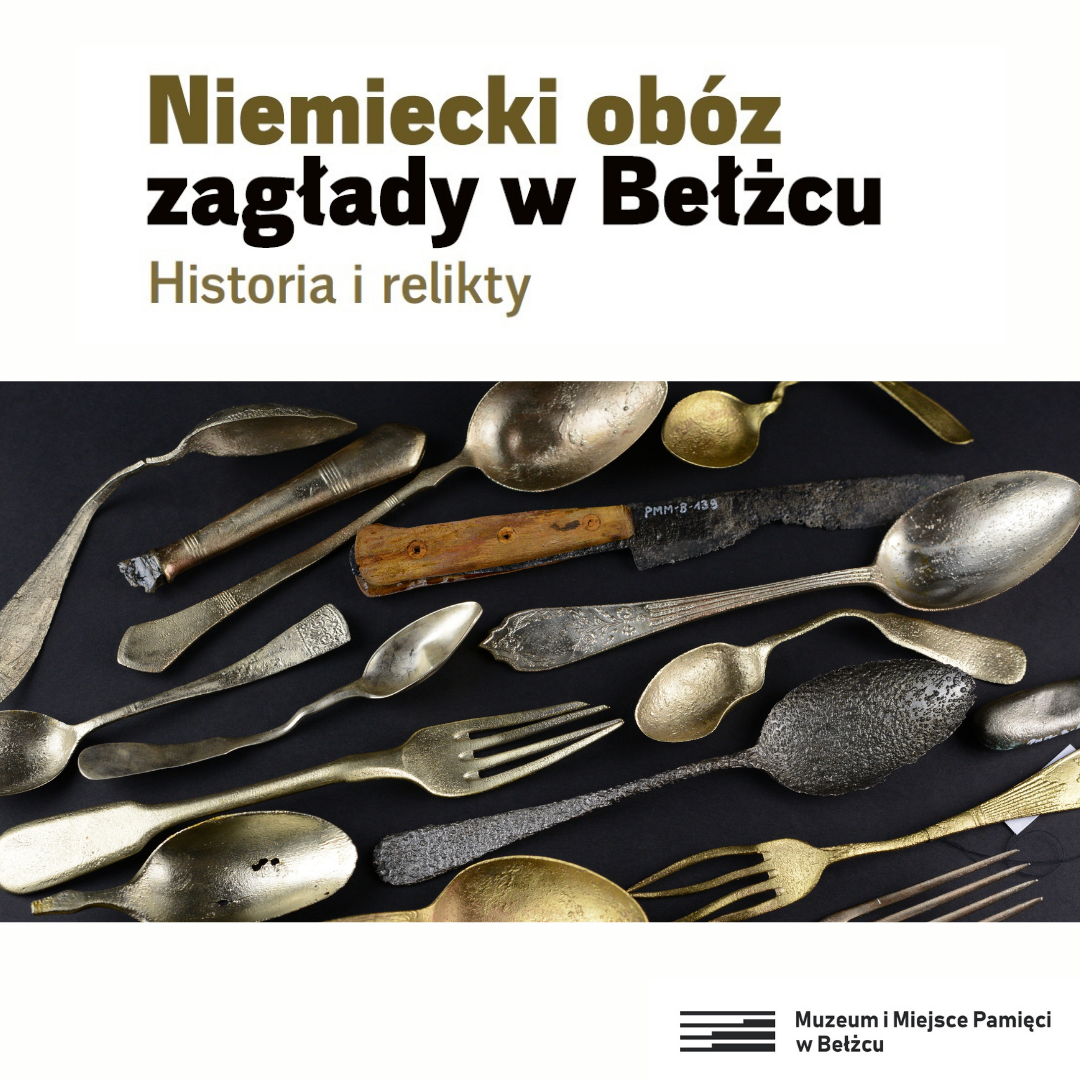
The exhibition organized by the Museum and Memorial Site in Bełżec, a branch of the State Museum at Majdanek, presents the history of the camp in the light of archaeological excavations.
It presents artifacts obtained during archaeological excavations in the area of the former extermination camp in 1997-1999, as well as historical and contemporary photographs.
Screenplay: Tomasz Hanejko, Jarosław Joniec
Scientific consultation: Wiesław Wysok, Dariusz Libionka
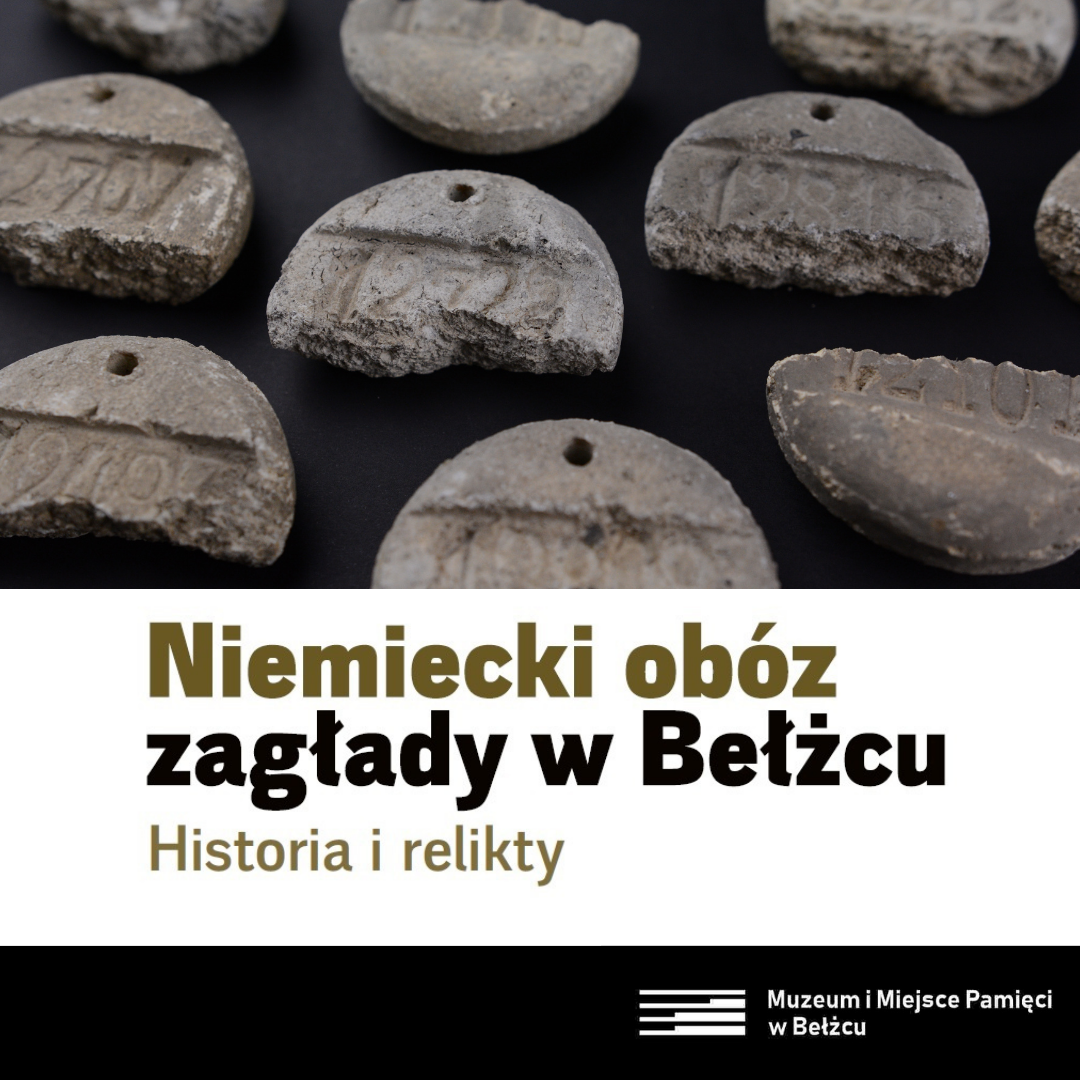
Temporary Exhibition
Czyny świadczą o człowieku. Polacy udzielający pomocy Żydom podczas Holokaustu na Kresach Wschodnich II Rzeczypospolitej 2 February 2021 - 28 February 2021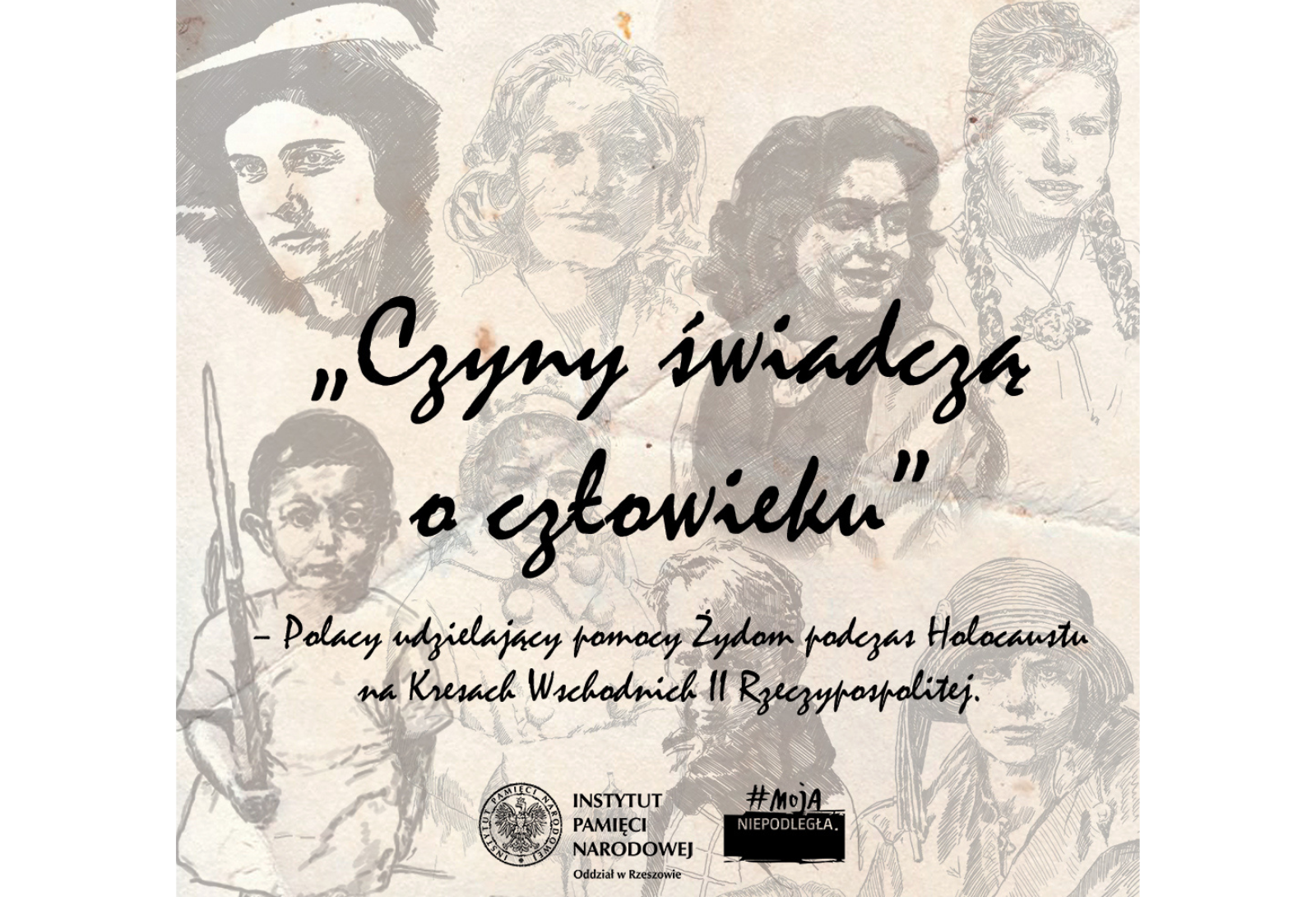
The exhibition, organized by the Institute of National Remembrance, Rzeszów Branch, shows the eastern territories of the Second Polish Republic according to the pre-war administrative division.
The exhibition presents photographs taken during the war, but also several years before and after its beginning. Photos of Poles, Jewish and hiding places. The exhibition also includes selected, previously unpublished documents confirming the help provided to Jews by Polish inhabitants of the Eastern Borderlands of the Second Polish Republic.
Author: dr hab. prof. UR Elżbieta Rączy
Temporary Exhibition
Fight and Suffering. Polish Citizens During World War II 3 August 2020 - 30 September 2020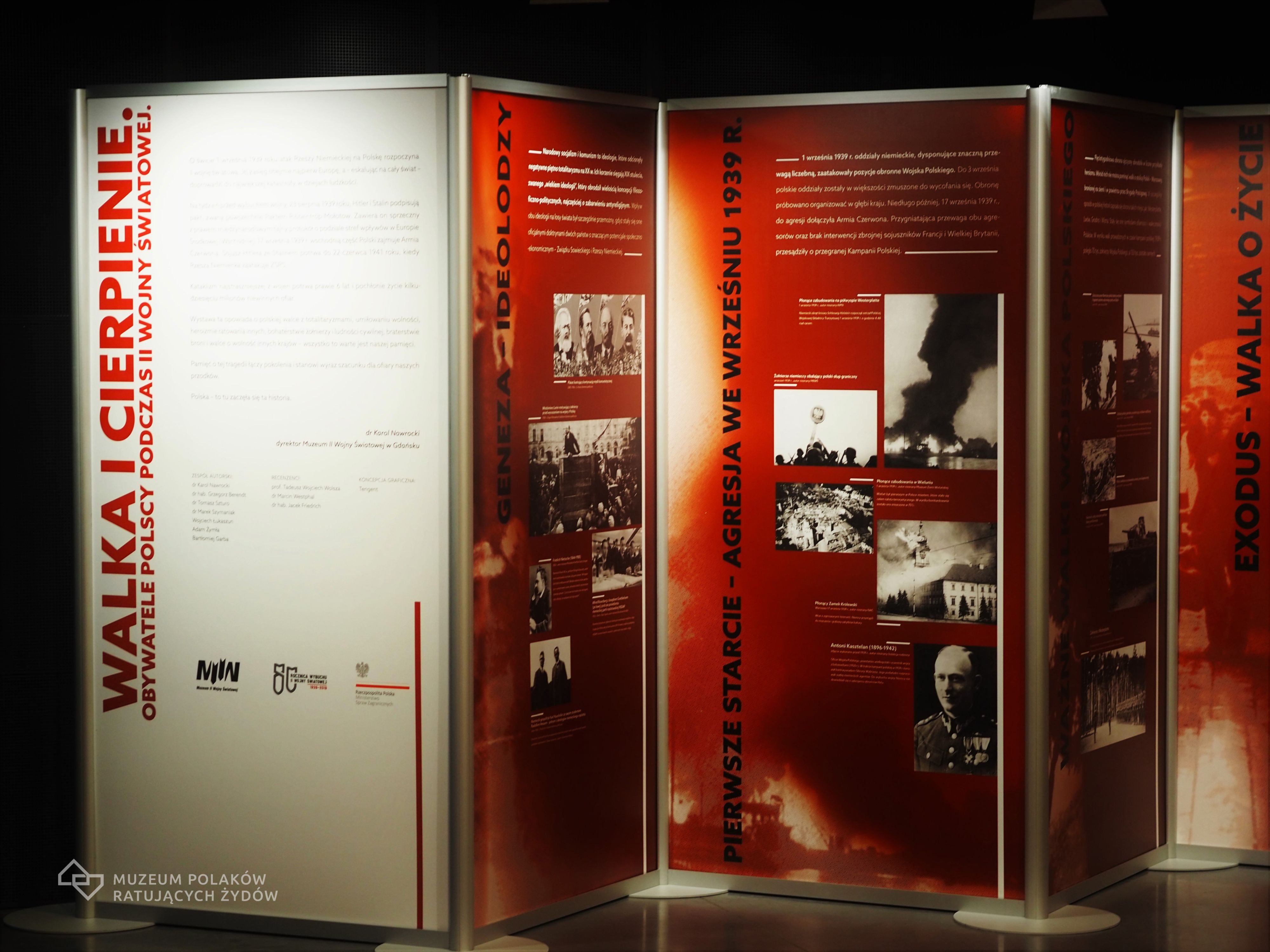
The exhibition “Fight and Suffering. Polish Citizens During World War II” shows the fate of Polish citizens during the tragic times of World War II and the German occupation. This exhibition is an international project carried out by the Museum of the Second World War in Gdańsk in cooperation with the Ministry of Foreign Affairs of the Republic of Poland.
The exhibition is a story about the Polish experience of World War II. It shows the attitudes of Polish citizens in the context of tragic events, the overwhelming power of the aggressors, and then the occupiers. The exhibition touched upon such issues as: the fight against totalitarianism, the fight for independence, or helping fellow citizens. The topics were presented from the perspective of both soldiers and civilians.
Temporary Exhibition
‘Was there any way to help them in this desolation?’ Rescue of Jews in occupied Poland 27 June 2020 - 17 January 2021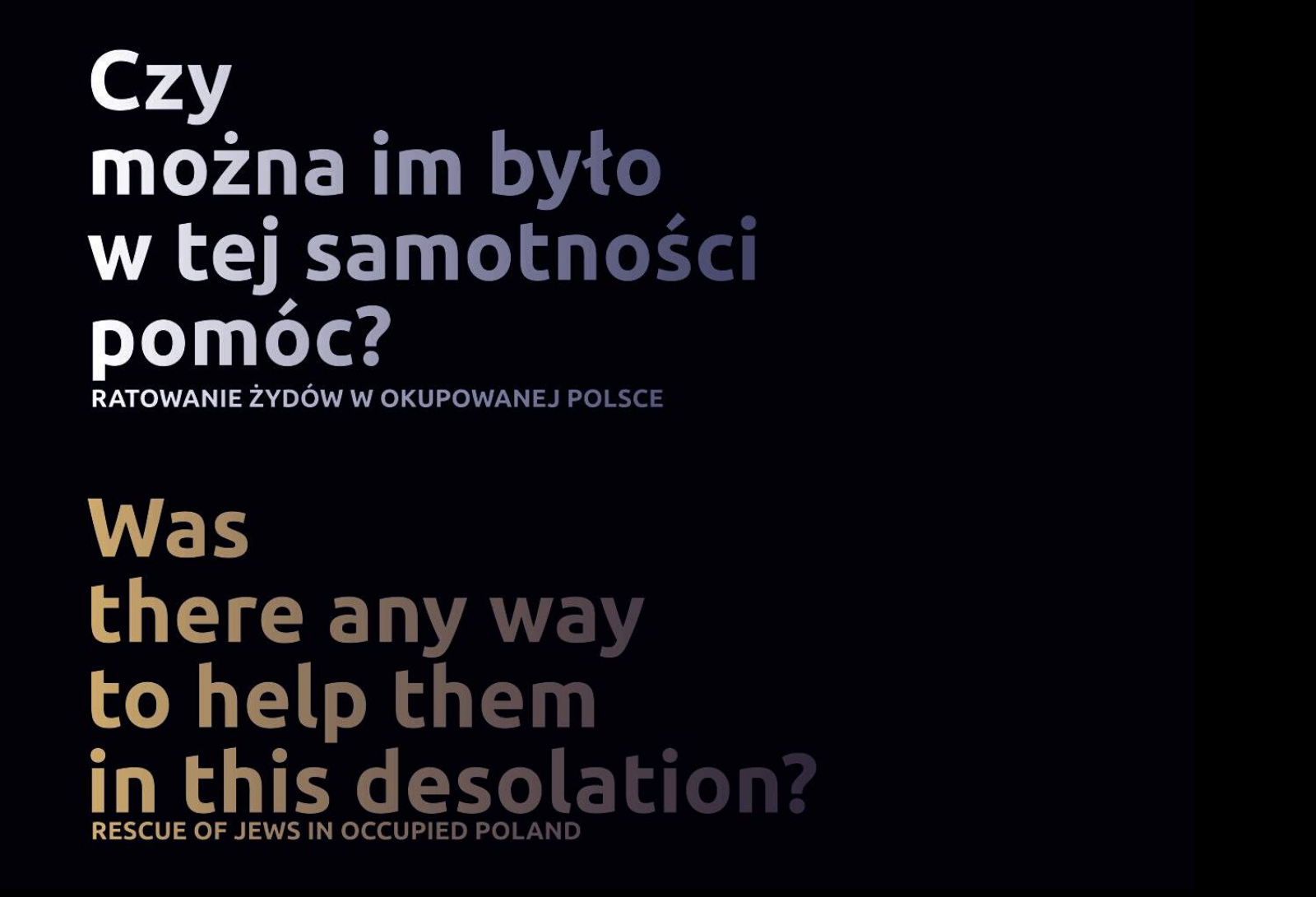
EDIT: ON JANUARY 31 THE EXHIBITION FINISHING DATE WILL BE SET
‘Was there any way to help them in this desolation?’ Years later, this question is posed by Władysław Bartoszewski, one of those who risked their lives and lent a helping hand to persecuted Jews during the Holocaust.
The new mobile exhibition by the Museum of Poles Saving Jews is devoted to the issue of polish help to Jewish people during WWII. By showing the realities of the Holocaust in occupied Poland – from the German invasion in 1939, through the implementation of the plan of the extermination of Jews by the occupier, to the end of the war – it presents the individual stories of the Rescued and Rescuers and their dramatic choices.
Authors: Kamil Koper, Anna Stróż-Pawłowska
Temporary Exhibition
Exhibition ‘On your soil I was destined to sing the song of your land – Stories of Eminent Figures of Jewish Origin from the Podkarpacie Region’ 21 January 2020 - 15 March 2020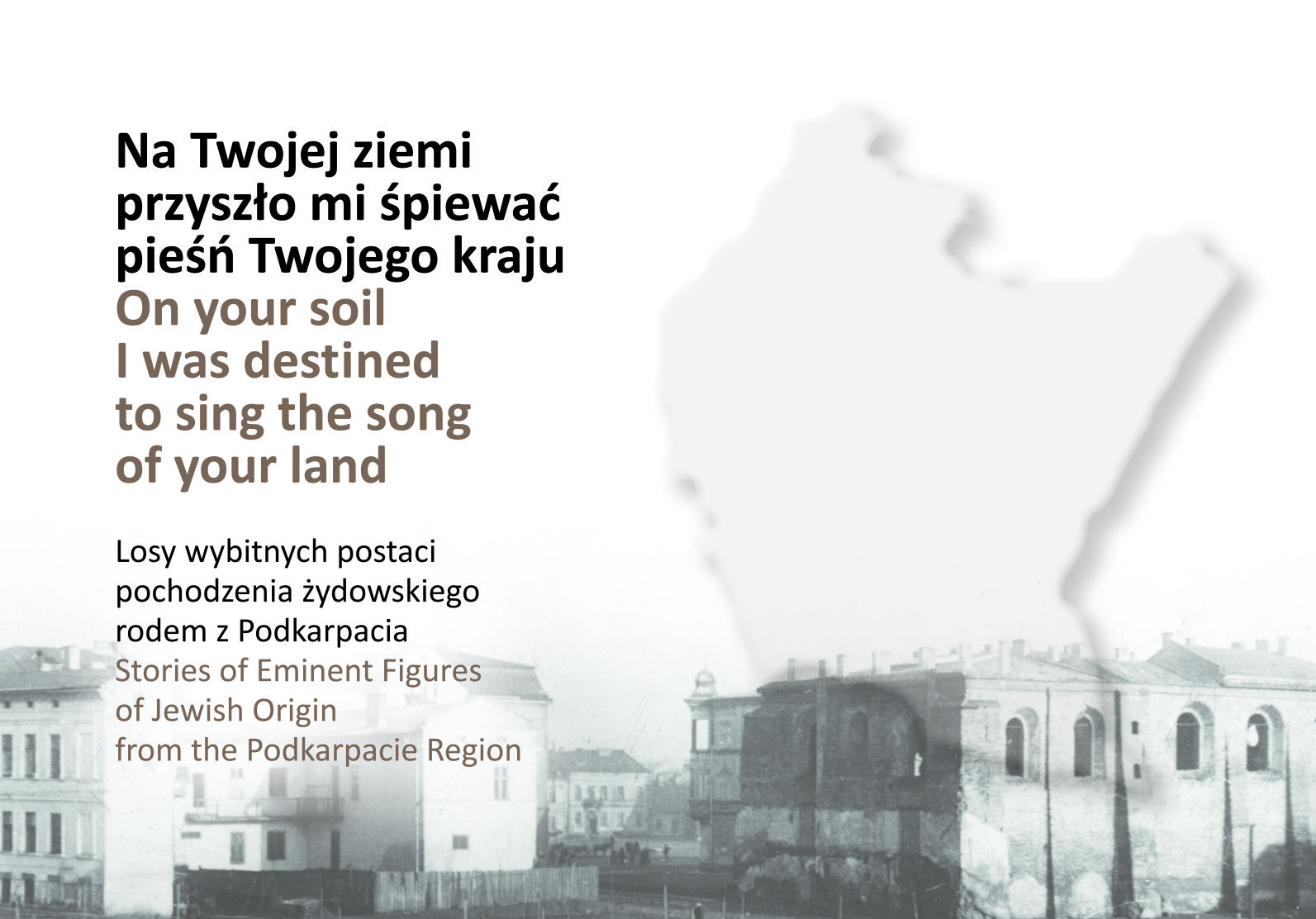
Arthur Miller, an outstanding novelist and life partner of Marylin Monroe, a Nobel Prize winner in nuclear physics, Isidor Isaac Rabi, or Freud’s associate Abraham Brill – these are just a few of famous people presented here, who share not only international success, but also origin: being Jewish and at the same time coming from Podkarpacie.
For most of them, this region was nothing more than a country of ancestors or a country of their childhood, often perceived from the perspective of the Holocaust as a ‘lost paradise’, but also as a land stained with blood. Most of them, in the era of migration, make their careers abroad, and only few decide to become permanently connected with Podkarpacie. However, even those few are not able to make their dream come true – Nachum Sternheim and his family are killed during the German occupation in Rzeszów, and Kalman Segal and Roman Harte leave the country after the war due to growing discrimination and missing career prospects.
The attitude of Jewish ‘citizens of the world’ originating in the Podkarpacie to this region is very diverse throughout the century – some, such as Berish Weinstein, recall it with sentiment in their works, others in their autobiographies make only laconic references to their roots in the Podkarpacie region, while others, such as Fred Zinnemann, do not mention them at all.
The presented characters, apart from their Jewish and Podkarpacie origins, have one more thing in common: their passion and pursuit of their dreams. Presented biographies are the history of fighting against the adversities of fate and the history of turning defeats into success. Due to their titanic work, their accomplishments are known to almost everyone. It is a huge loss that, paraphrasing the title quote from the poem by Berish Weinstein, despite their ties with the Podkarpacie region, these people ‘were destined to sing the song on another, not Podkarpacie, land’.
Exhibiton authors:
Kamil Kopera, Jakub Pawłowski, Anna Stróż / Muzeum Polaków Ratujących Żydów/ Museum of Poles Saving Jews
Coordination of production:
Karolina Woźniak
Design:
Pro Human Design, Kraków
Temporary Exhibition
“Righteous Insurgents ‘44” 1 September 2019 - 3 October 2019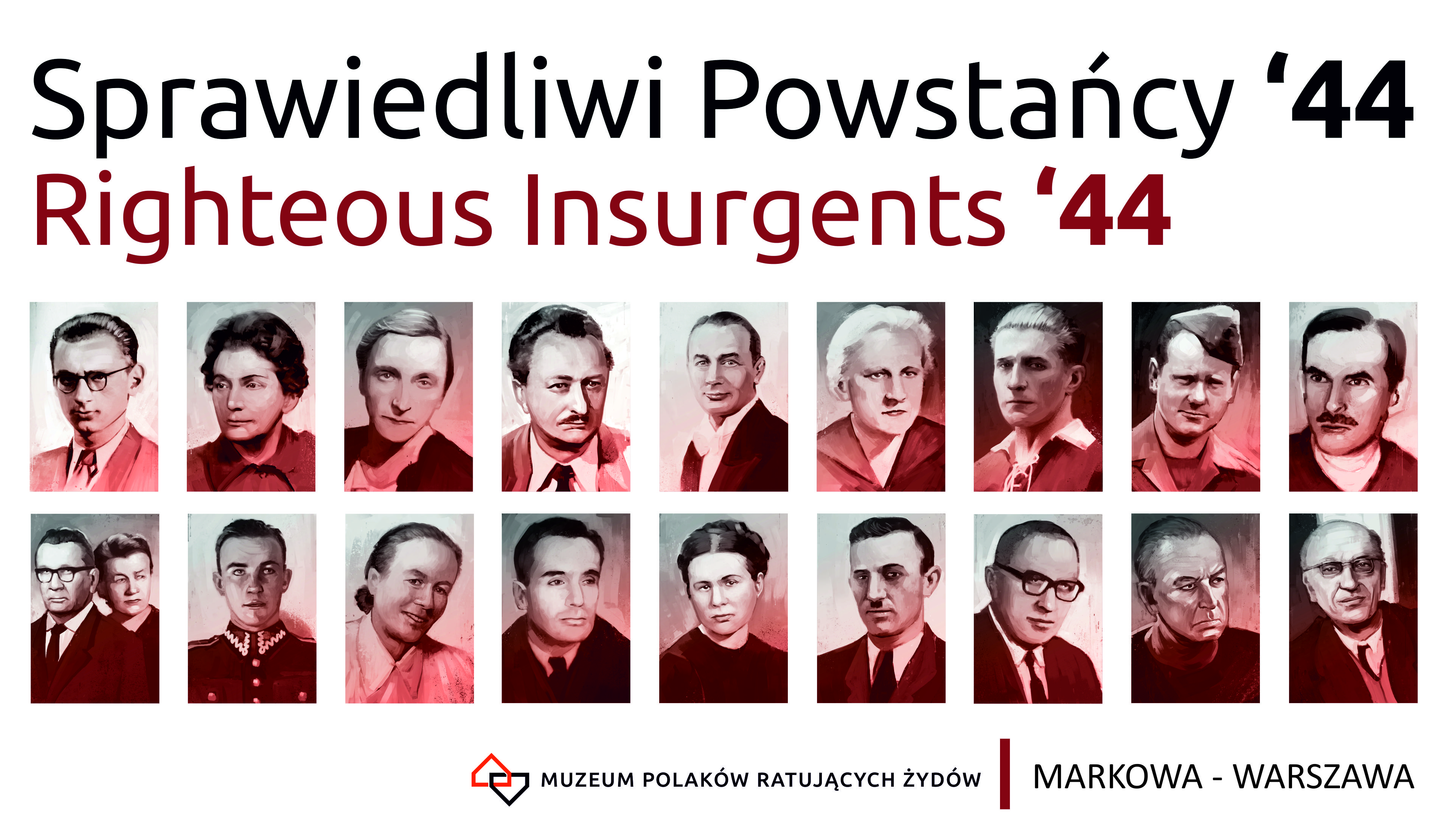
The next anniversary of the outbreak of the Warsaw Uprising is not only an occasion to look at this heroic revolt in the context of historical analysis, but also an opportunity to get to know its participants and their touching and inspiring stories. Warsaw insurgents can and must be perceived from many perspectives. We choose our own by focusing on those who, apart from insurgent experience, can pride themselves on their help given to the Jews condemned to extermination by the occupier. It is them: the Righteous Insurgents ‘44. The ones who, apart from decorations conferred to them in recognition of war bravery, also hold the honorific title of Righteous Among the Nations given by the Israeli Yad Vashem Institute (often received together with their friends and family), are main characters of this exhibition. There are so many conditions that make the selected characters differ from one another: age, gender, social origin, political views, interests, etc. Nevertheless, it is not difficult to see some common denominators: loyalty to universal values, nonconformity, commitment and responsibility. The presented biographies are stories of double fight. The first is a direct struggle against the German occupier, carried out on the barricades of the rising Warsaw, in intelligence units, at radio stations, at factories, and in field hospitals. The second is a fight against the occupier, clandestine and secret, which took place at the walls of the ghetto, in hideouts that became a shelter for exterminated Jews, and in offices organizing false identity cards. And both fights were a sign of concern for disadvantaged fellow citizens and for homeland. Both were carried out with a sense of helplessness, anger and omnipresent fear. In any case, the real price for opposing the ongoing harm was death. In the background it still remained Poland which had been devastated during several years of occupation, and still have been struggling with the Nazi and Soviet enemy.
Dates and locations: -Ulma Family Museum of Poles Saving Jews in World War II in Markowa, Markowa 1487, since 01.08.2019 -NEW LOCATION: Warsaw, Warsaw Uprising Square, 01.08 – 03.10.2019
Organizer: The Ulma Family Museum of Poles Saving Jews in World War II The concept of the exhibition: Jakub Pawłowski Authors of texts: Kamil Kopera, Jakub Pawłowski, Anna Stróż-Pawłowska Production Coordinators: Katarzyna Nowicka, Marcin Zgłobiś Graphic Design: Mikołaj Birek
Temporary Exhibition
‘Between Life and Death. Stories of Rescue During the Holocaust’ 4 June 2019 - 31 July 2019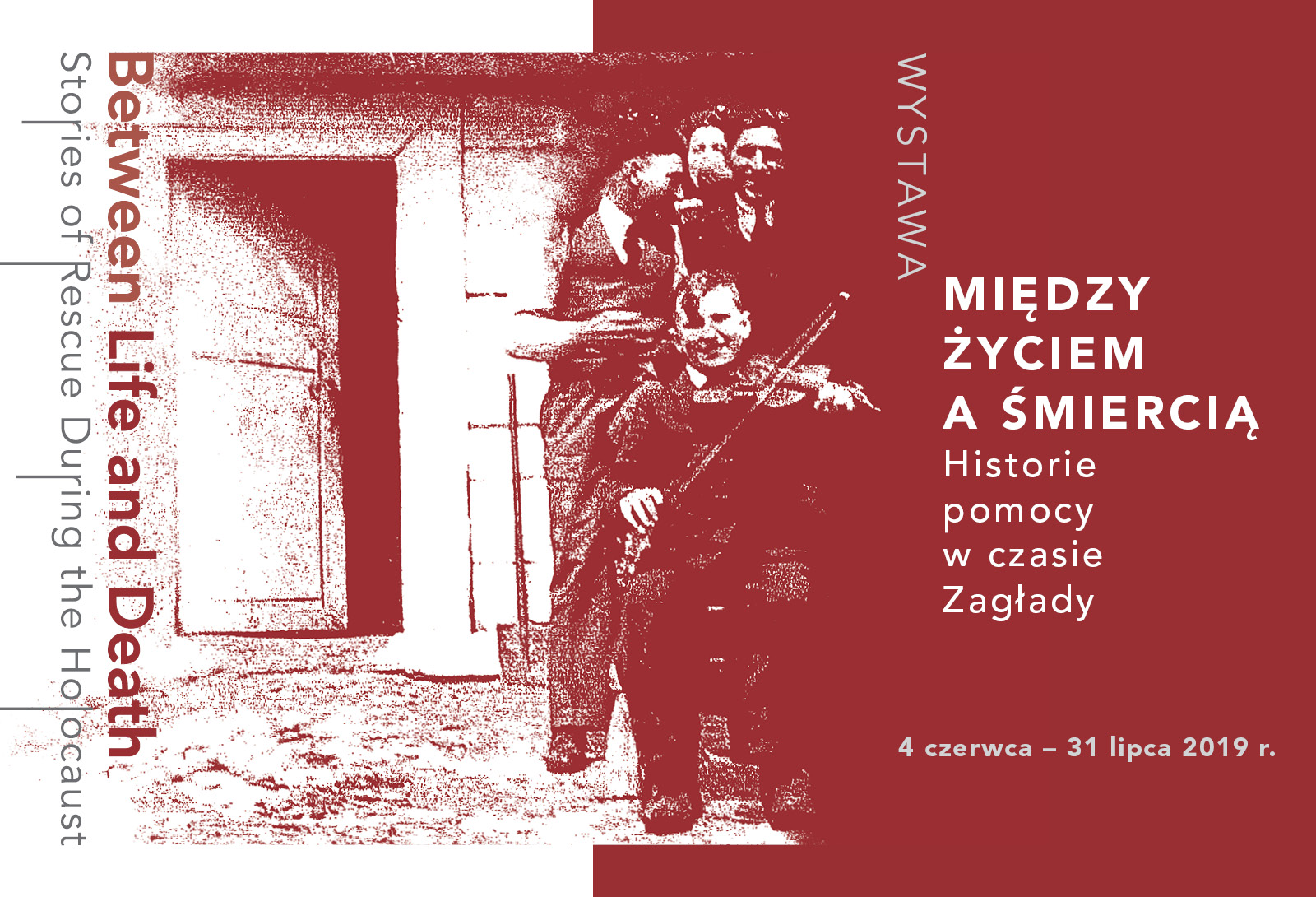
What was the daily experience of Jews hiding from the Nazi German machine of extermination and those who brought them help sometimes even risking their lives?
The travelling exhibition ‘Between Life and Death. Stories of Rescue During the Holocaust’, which highlights the complexity of human relations under these extreme conditions, will be on view at Museum of Poles Saving Jews in Markowa between 4 June and 31 July. The display showcases individual accounts of the Holocaust survivors along with those of the rescuers from ten different European countries.
Markowa is the sixth stop on the display’s tour around Europe, after Brussels, Amsterdam, Bratislava, Vilnius and Wrocław.
The initiative is a joint project of European Network Remembrance and Solidarity, POLIN Museum of the History of Polish Jews, and Silent Heroes Memorial Center.
04 June – 31 July
Temporary Exhibition
Passports 18 May 2019 - 31 May 2019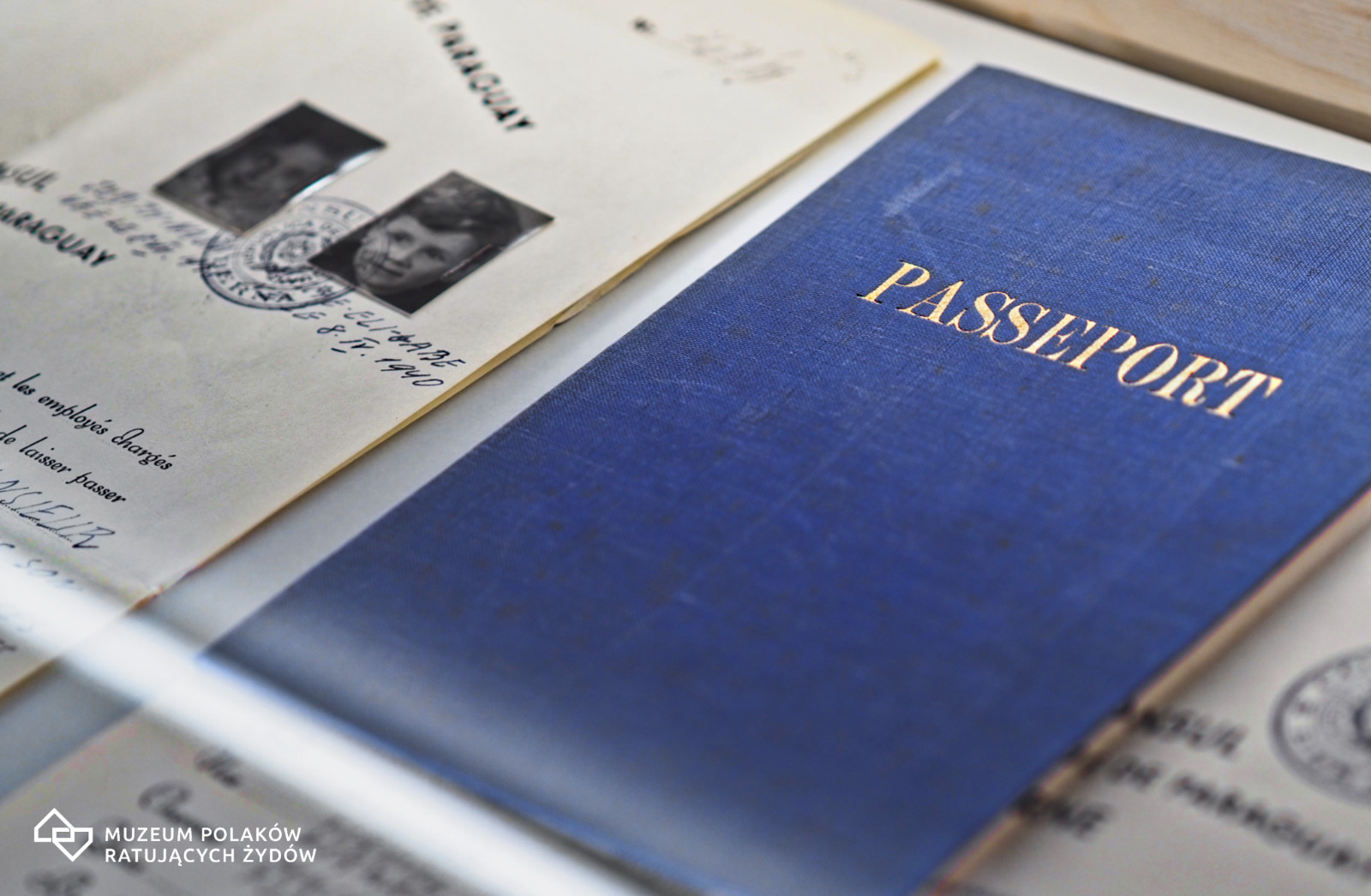
Exhibition “Passports”
carried out by the Pilecki Institute in cooperation with the Polish Embassy in Bern
tells the stories of just diplomats saving Polish Jews and about the reaction of the underground state and government in exile to the crimes of the Holocaust.
The purpose of the exhibition is to present the role of the Polish government in exile and the Polish Underground State in informing the world about the extermination of Jews and actions taken to save them. The exhibition was organized in connection with research conducted by the Pilecki Institute in cooperation with the Polish Embassy in Switzerland. So far, based on research, a list of 710 names of Jews has been published, including 115 survivors from the Holocaust, who as a result of the efforts of the so-called Berne Group had the passports of Haiti and Honduras. The exhibition presents in detail the activities of the Berne Group and its main operators, including Chaim Eiss and Aleksandra Ładoś.
The Berne Group was an informal form of cooperation between Polish diplomats from the Polish mission in Bern and the representatives of Jewish organizations to save European Jews. Under the leadership of Ambassador Alexander Ładoś, the group provided false South American passports to Paraguay, El Salvador, Bolivia, Peru, Haiti and Honduras and other countries. Such passports protected their owners from deportation to extermination camps in Poland occupied by the Third Reich. According to various estimates, a total of about 4,000 documents were issued. The number of survivors remains unknown.
The most valuable objects from the Eiss archive are presented in showcases: passports, bills, correspondence between Chaim Eiss and Polish diplomats. There are also letters between Jews in ghettos and Silberschein, who was one of the intermediaries between Polish Jews and a diplomatic mission. Visitors will be able to view documents, including in the form of reprints.
A special multimedia presentation gives you the opportunity to view over one hundred unusual portraits from the Eiss archive. These are photographs of Polish Jews created to prepare passport documents that were to enable them escape and save their lives.
The motto of the entire exhibition is a poem by a Polish Jew, poet and chronicler of the Warsaw Ghetto ,murdered in 1943 by Władysław Szlengel “Passports”:
I would like to have a Paraguayan passport
rich and free is this country
ah, how nice to be a subject
of the country called Paraguay.
I would like to have a Uruguayan passport
have Costa Rica, Paraguay,
in order to live peacefully in Warsaw,
however, this is the most beautiful country.
Organizer: The Pilecki Institute in Warsaw: www.instytutpilecki
Cooperation: the Polish Embassy in Switzerland
Authors:
Hanna Radziejowska,
Director of the Pilecki Institute Wojciech Kozłowski,
Ambassador dr. Jakub Kumoch, Joanna Kumoch, Jędrzej Uszyński
Project: Zespół Wespół
Realisation: Trik- Trak
Sound installation: Patryk Zakrocki
Temporary Exhibition
“Spectacle of one work” Arkadiusz Andrejkow 30 January 2019 - 20 March 2019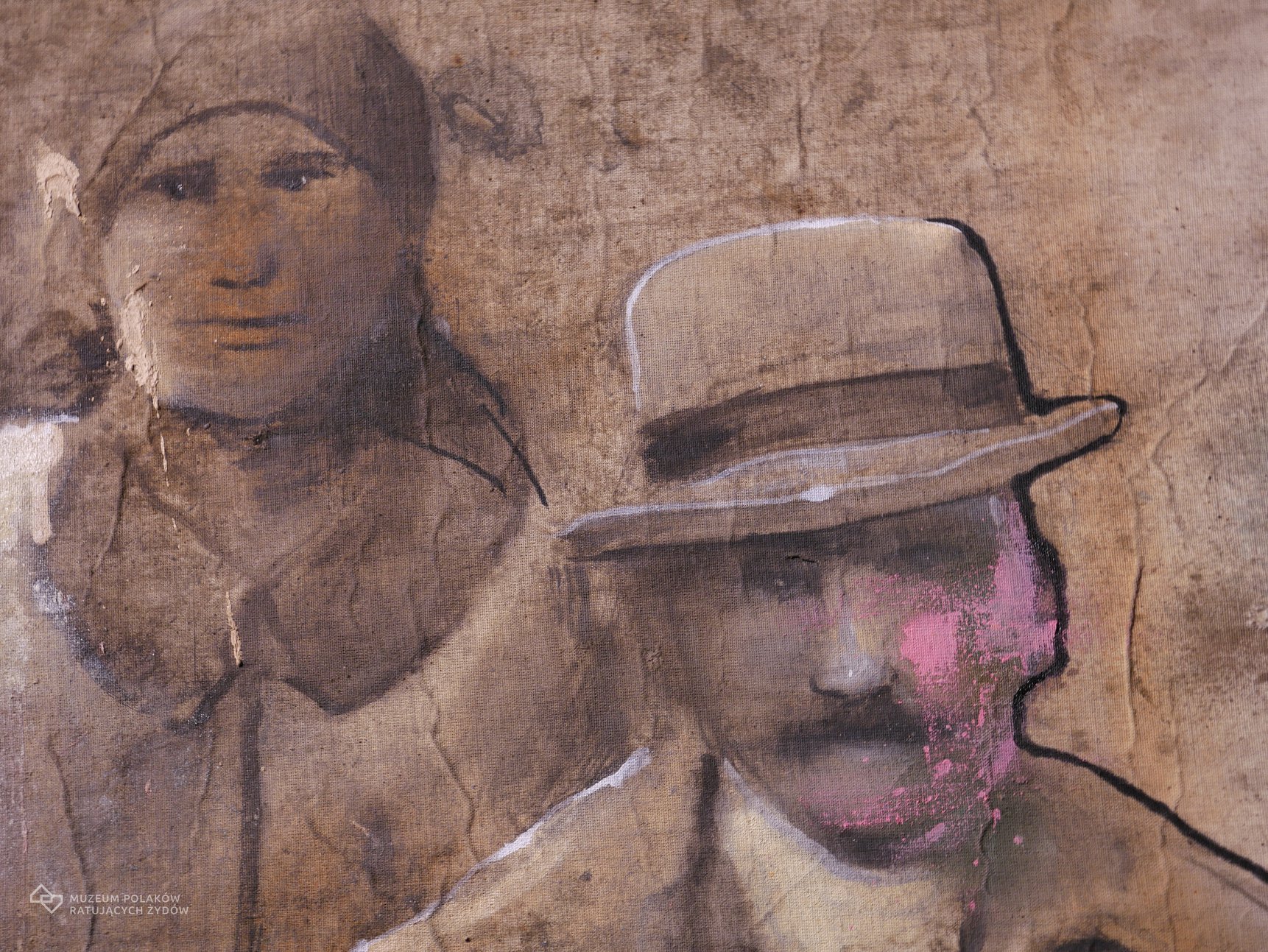
Until March 20, in the temporary exhibition room, the Ulma Family Museum of Poles Saving Jews in World War II in Markowa can watch the latest exhibition under the slogan “Spectacle of one work” by Sanok’s artist Arkadiusz Andrejkow. The painting was made last year, and the nature of his work is a spray on the school map.
The painting is inspired by a photograph taken by Józef Ulma in 1923. It shows the parents of Józef: Marcin and Franciszka Kluz, his sister Maria and brothers Antoni and Władysław. The basis for the painting is an school map from Slovakia, which, thanks to its wear and, in part, withdrawal from use, has become the ideal canva for the modifing of old family photography. Worned out map took on the burden of a second life.
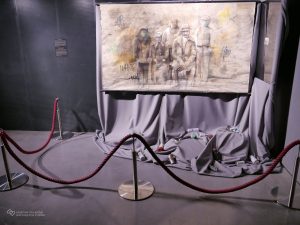
Temporary Exhibition
This is how independence came about 31 October 2018 - 2 January 2019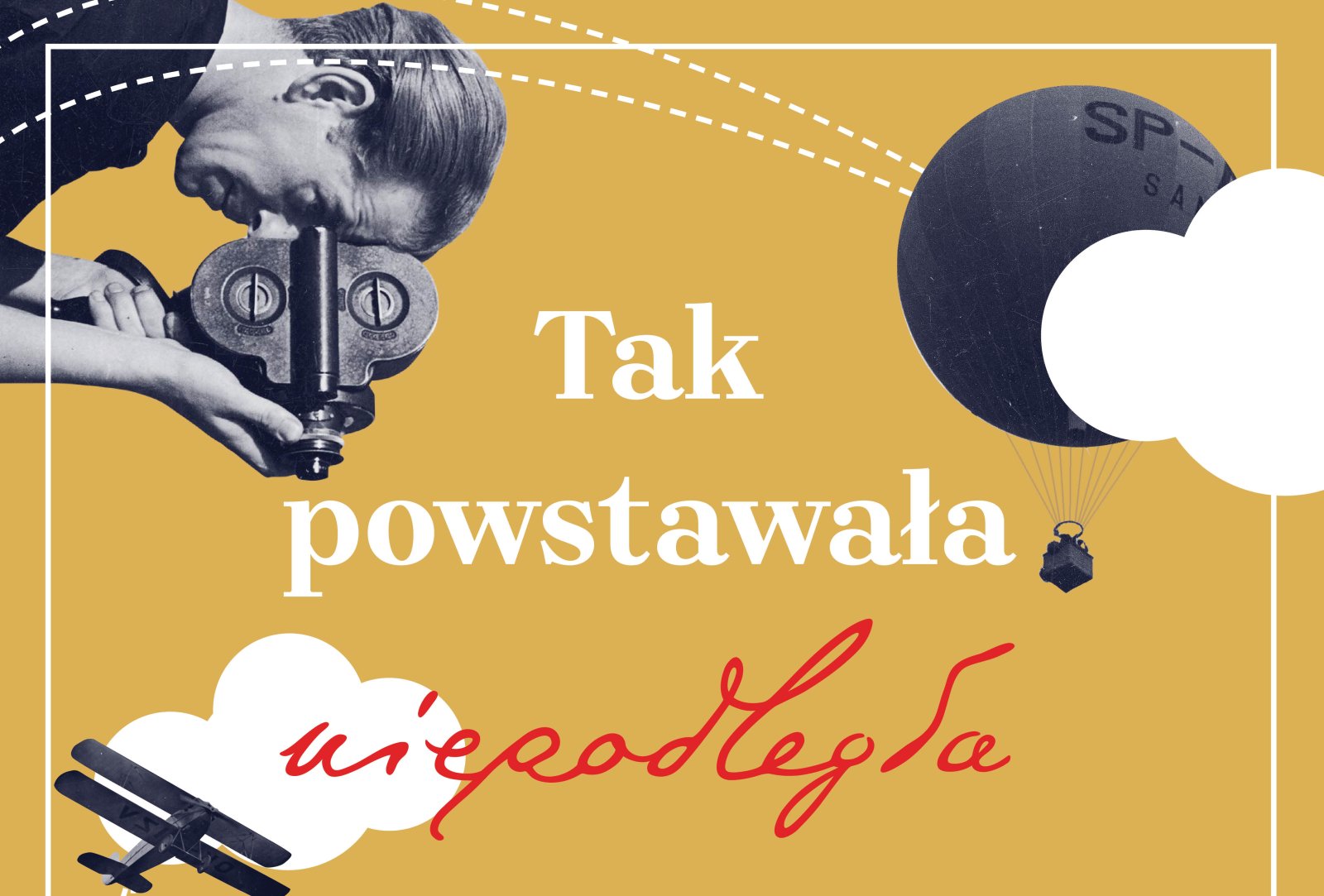
From October 31, 2018 to January 2, 2019, a temporary exhibition devoted to the process of regaining independence by Poland and the achievements of the Second Polish Republic will be presented at the Museum of Poles Saving Jews in Markowa.
The exhibition was initiated by the Office of the "Independent" Program, the authors of the boards are dr Sebastian Adamkiewicz (museum specialist and assistant professor in the historical department of the Museum of Independence Traditions in Łódź) and Anna Bińkowska (Office of the “Independent” Program), while the historical consultant is prof. UR dr hab. Paweł Grata.
Temporary Exhibition
” I WILL FEAR NO EVIL…” 3 July 2018 - 30 September 2018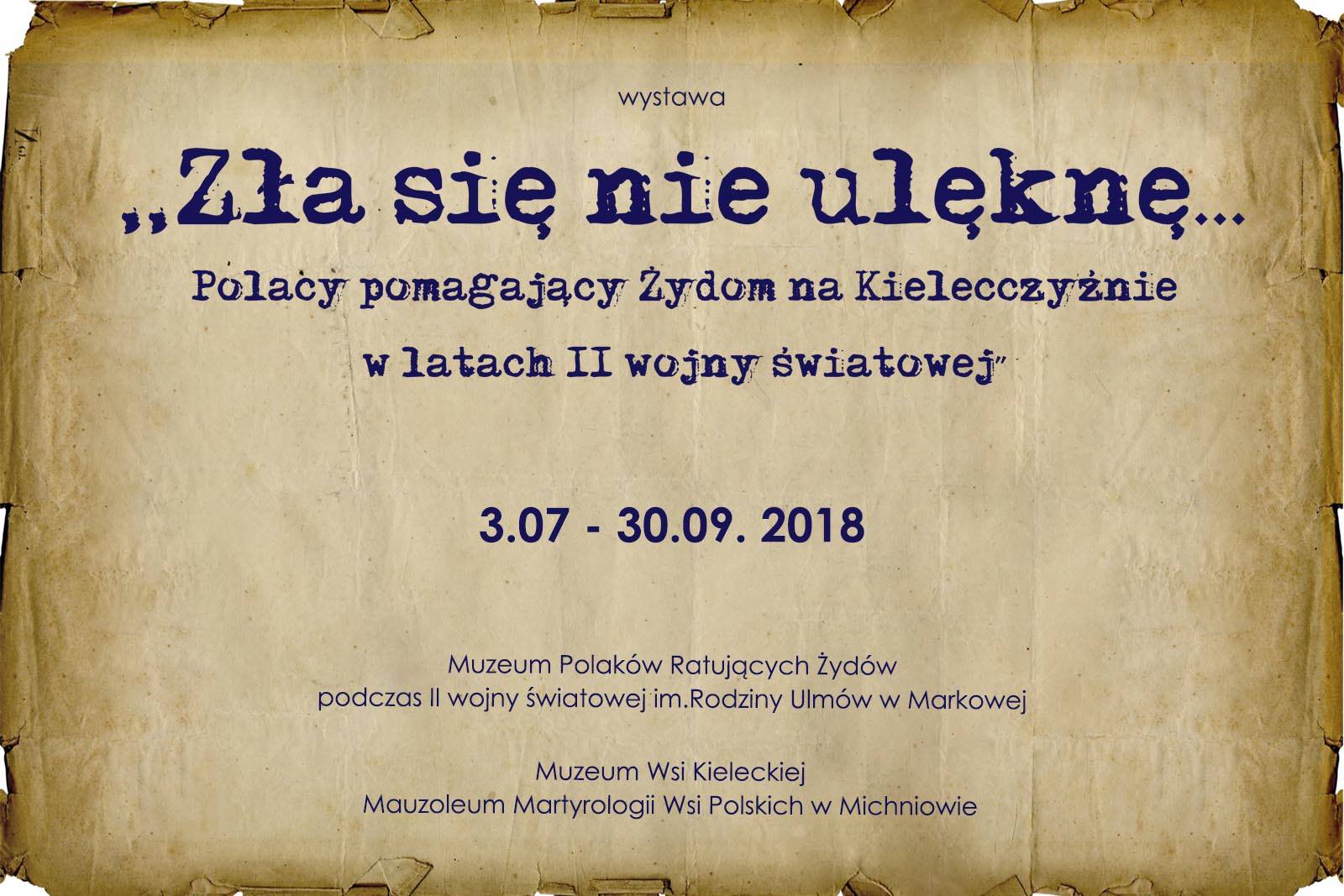
Exhibition presented at the Ulma Family Museum of Poles Saving Jews during World War II from 03. 07 to 30. 09. 2018.
The presentation, outlining the general historical context, presents attitudes and individual stories of Poles’ involvement in rescuing Jewish fellow citizens in the former Kieleckie province.
The study consists of: photographs, documents, written reports. They reveal the silhouettes of the inhabitants of Kielce, who weren’t indifferent to the fate of those sentenced to the Holocaust. The heroes were both soldiers from partisan units, who not only saved Jews, but also supported the people who helped them, and clergy, who gave shelter to Jewish children in shelters and orphanages by issuing baptismal certificates, thanks to which Jews could apply for “Aryan documents”. Finally, they were also ordinary citizens of villages and towns. Often the stories of help ended tragically both for the Rescued and for the Rescued. However, many of them luckily survived the end of the war in order to be able to testify to the tragedy of those years.
27 September 2018 a final meeting will be held with the authors of the exhibition and invited guests.
Author of the exhibition: Ewa Kołomańska / Mausoleum of Polish Village Martyrdom in Michniów, artwork: Grzegorz Chorążek / Museum of Kielce Village
Temporary Exhibition
Risking their lives – Poles saving Jews during the Holocaust 3 March 2018 - 14 May 2018
The exhibition “Risking their lives – Poles saving Jews during the Holocaust” consists of 18 boards presenting the stories of Poles who, risking their lives and their families, helped the persecuted Jews. In German-occupied Poland, unlike in Western Europe, helping Jews was punishable by death. After the war, some of the rescuers were honored by the State of Israel with the title of Righteous Among the Nations. At the exhibition, the lives of the saved are shown in the historical context of occupied Poland. The circumstances and scale of the assistance provided is explained, as well as the motivations of the Righteous.
The exhibition was prepared by the POLIN Museum of the History of Polish Jews in partnership with the Ministry of Foreign Affairs of the Republic of Poland.
Admission based on a ticket to the Museum (PLN 5 / PLN 2).
Temporary Exhibition
Żegota – Council to Aid Jews 8 February 2018 - 8 March 2018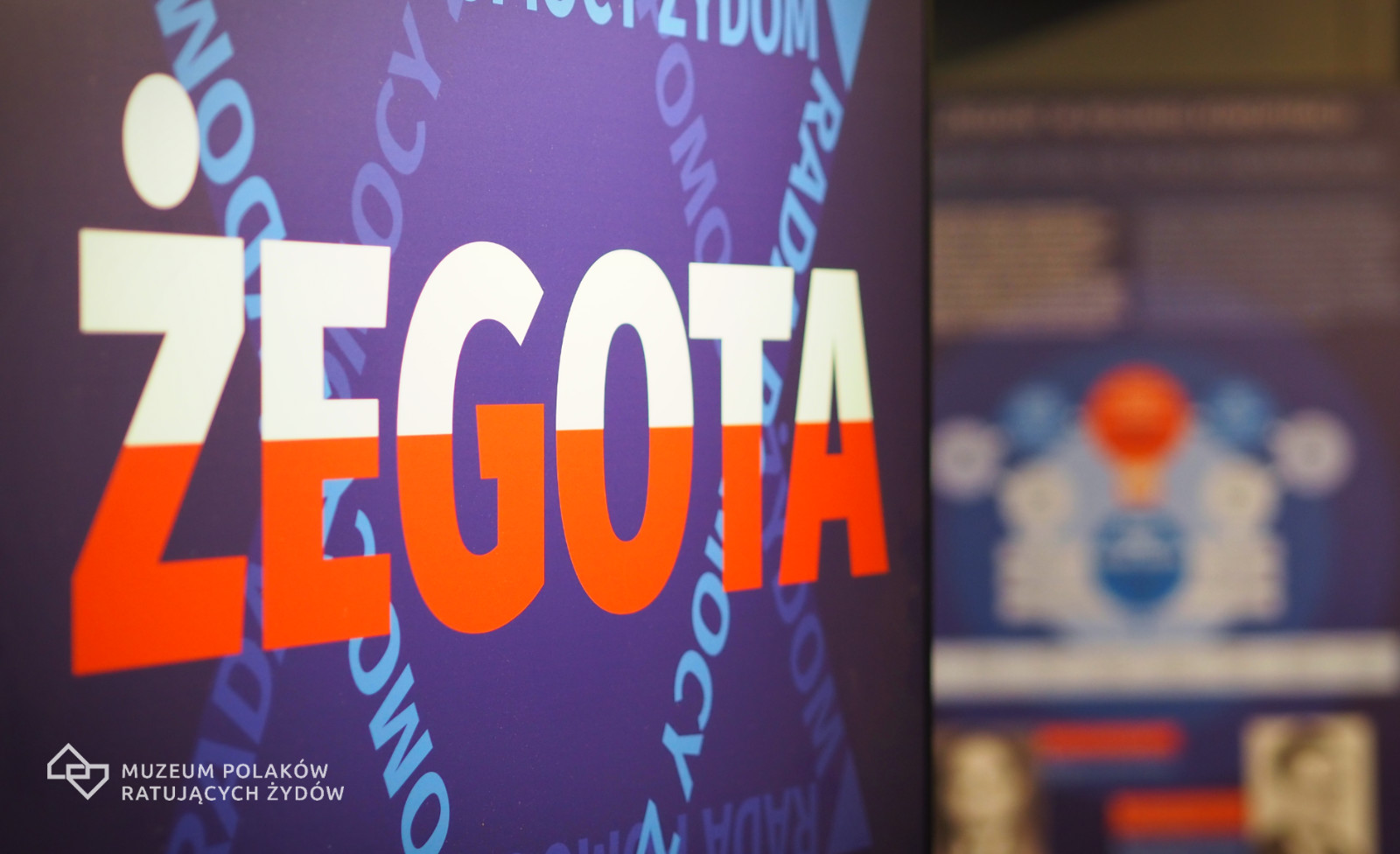
The exhibition “Żegota – Council to Aid Jews” at The Ulma Family Museum of Poles Saving Jews in World War II.
Council to Aid Jews “Żegota” was founded on December 4, 1942. It was a part of the Polish Underground State, active 1942–45. “Żegota” helped Jews in and outside of ghettos, and documented German crimes against the Jewish population. Activists of “Żegota” prepared hiding places for escapees from the ghetto, they also arranged false documents for them. Orphans were directed to Polish families and convents, where they had a chance to survive as Polish children.
The exhibition prepared on the occasion of the 75th anniversary of “Żegota”‘s creation. The authors of the exhibition are dr Marcin Urynowicz and dr Paweł Rokicki from the Institute of National Remembrance.
Available in our Museum until March 8, 2018.
Admission based on a ticket to the Museum (PLN 5 / PLN 2).
Temporary Exhibition
ACT FOR WHICH NO PAY IS. THE RIGHTEOUS FROM WEST POMERANIAN 7 November 2017 - 30 November 2017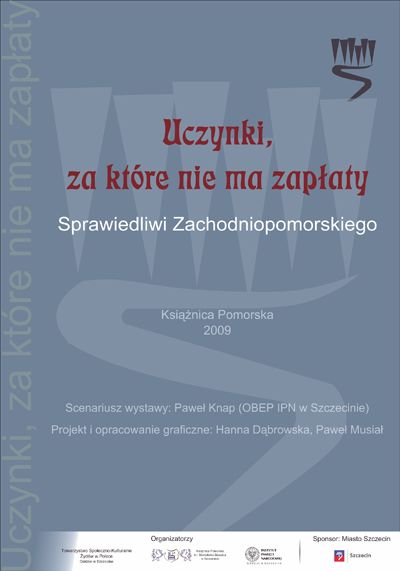
The temporary exhibition shows the history of the “Righteous Among the Nations” medal and the story of 10 people awarded with this decoration who lived in the area of the present West Pomeranian Voivodeship after the war.
The heroes of the exhibition are Leokadia Choińska, Józef Czekaj, Leokadia Gaweł, Zofia Hałub, Stefania Rokosz, Franciszka Rokosz, Leontyna Leśniewicz, Maria Ostrowska, Jan Płotkowski, Maria Stankiewicz, Władysław Szwed, Zuzanna Warchoł, Remigiusz Węgrzynowicz, Eugeniusz Ziobrowski and Antoni Żal.
The exhibition presents their actual portraits, fragments of their reports, archival photographs and documents from private collections.
script: Paweł Knap from the IPN Departmental Public Education Office in Szczecin.
organizers: Institute of National Remembrance Branch in Szczecin, he Pomeranian Library and Socio-Cultural Association of Jews Branch in Szczecin.
Admission based on a ticket to the Museum (PLN 5 / PLN 2 / PLN 1).
Temporary Exhibition
My Jewish parents, my Polish parents 29 September 2017 - 30 October 2017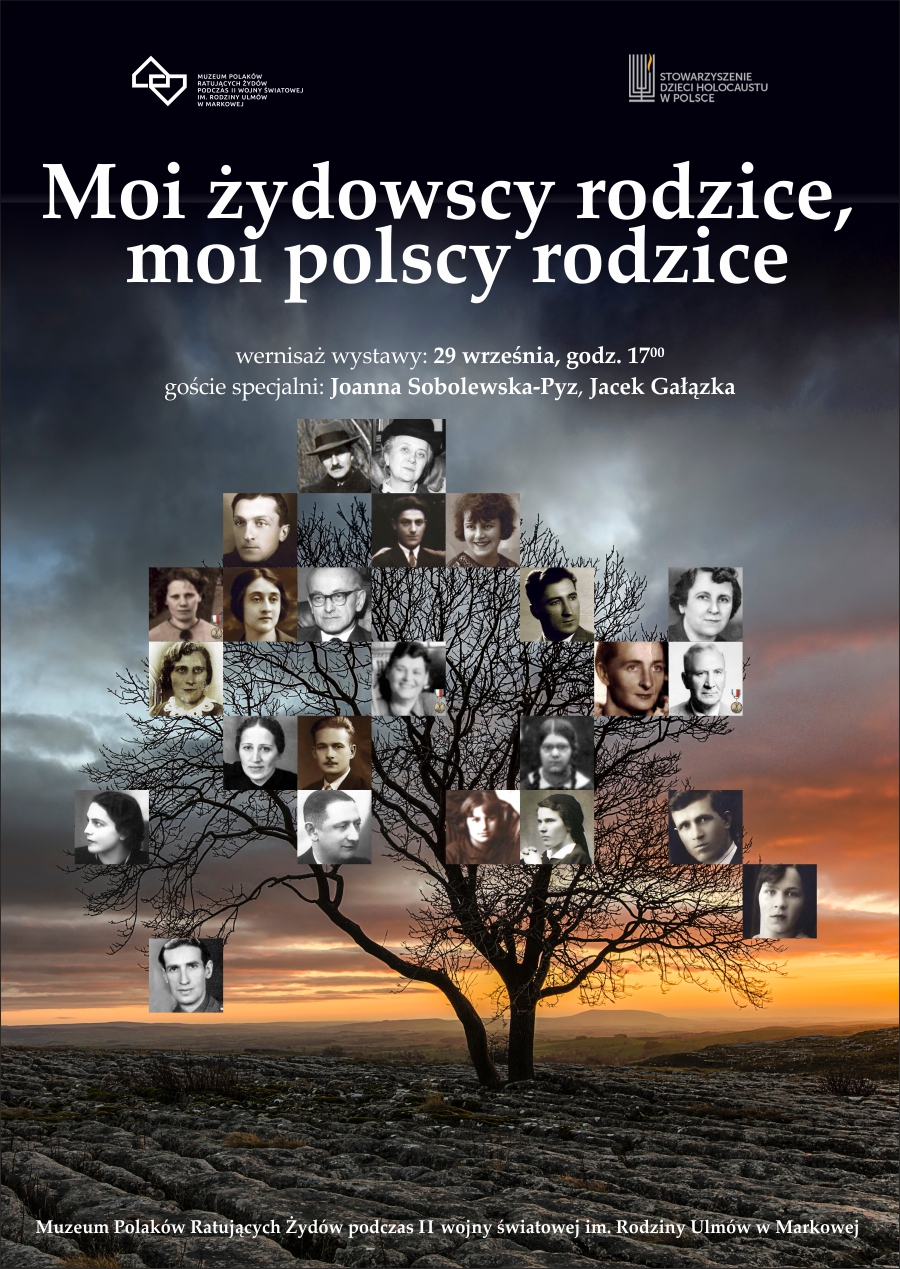
We kindly invite you to the opening of the exhibition “My Jewish parents, my Polish parents”
29 SEPTEMBER 17.00
The Ulma Family Museum of Poles Saving Jews in World War II
They were born with a death sentence. They survived thanks to the love of their parents – those who gave them away and those who received them as their own. The exhibition “My Jewish parents, my Polish parents” was created by the initiative of Joanna Sobolewska-Pyz, the chairwoman of the “Children of the Holocaust” Association in Poland, who will be the special guest at the opening of the exhibition. She will be accompanied by Jacek Gałązka and Anna Gałązka – authors of the exhibition texts.
Around five thousand of nearly one million Jewish children survived the Holocaust. Many of them found shelter in Polish families. Often, Poles who took care of the child, later became his parents. They generally kept the fact of the adoption a secret, some revealed the truth before death, others took it to the grave. Children brought up in foreign homes, which they considered their own, had to face their history and create an identity connecting a lost and gained family. Often, for years they searched for traces of their Jewish relatives, names, and dates of birth. Those who have failed still hoped.
The fate of fifteen survivors, born in 1939-1942, are presented on the boards. The exhibition was shown for the first time at the POLIN Museum of the History of Polish Jews in Warsaw in 2015. Now it travels around Poland and the world to give a testimony to limitless parental love, which forced them to give their beloved children to strangers and the courage of people who considered them their own daughters and sons.
Authors:
Anna Kołacińska-Gałązka – press and book editor, publisher, teacher. A graduate of studies on the History and Culture of Jews in Poland at the Faculty of History of the University of Warsaw. Editor of the volume of memories “Children of the Holocaust speak …”, author of interviews with survivors. Member of the Second Generation Association – Descendants of Holocaust Survivors.
Jacek Gałązka – information designer, graphic designer of newspapers, illustrated magazines and websites in Poland, Belgium, the Republic of South Africa, Sweden, Pakistan and the USA.
Maciej Śmiarowski – author of photographs
Admission based on a ticket to the Museum (PLN 5 / PLN 2 / PLN 1).
Temporary Exhibition
Karski and the rulers of humanity 29 September 2016 - 18 October 2016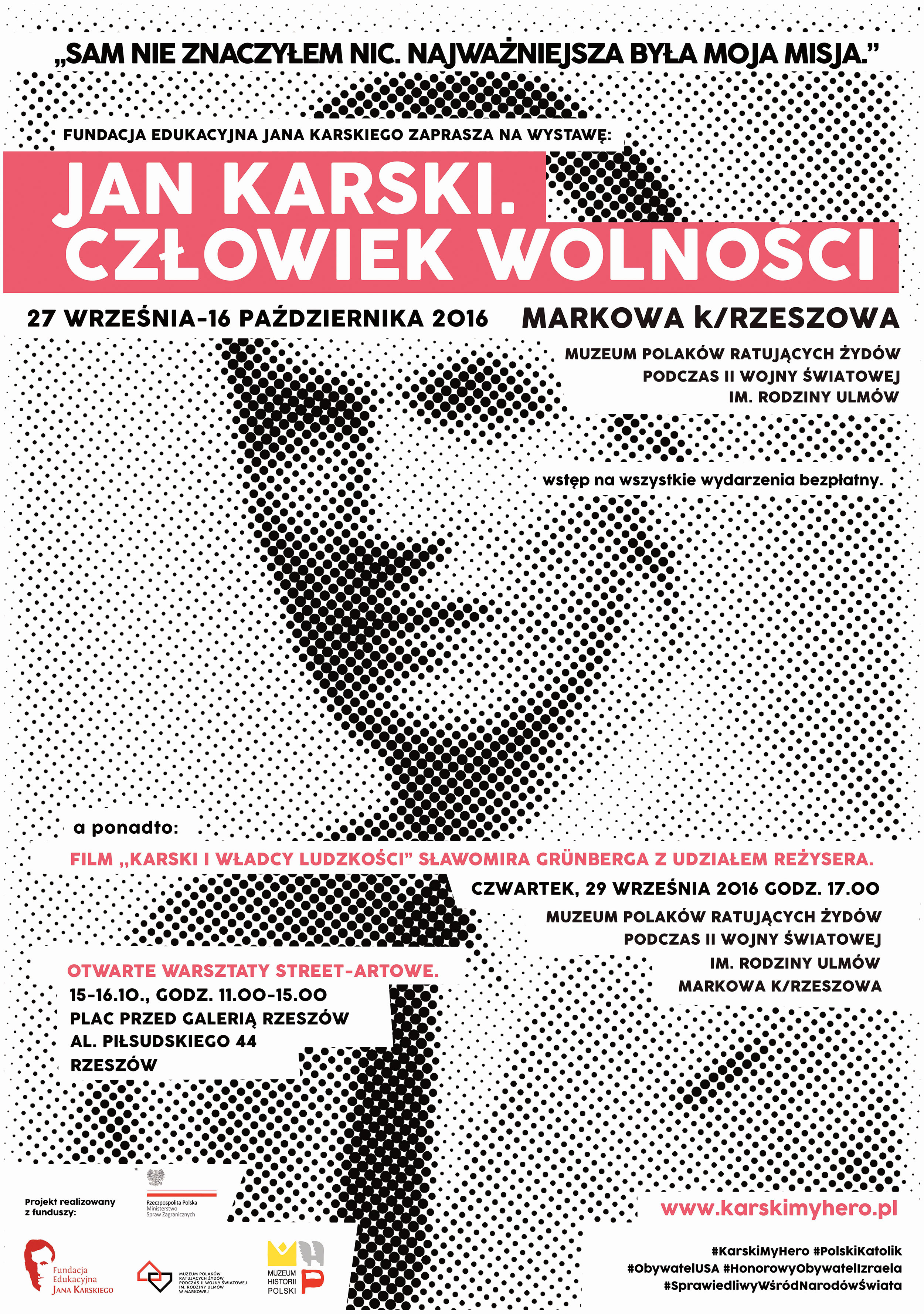
„I wanted to save millions, and I didn’t save anyone,” said Jan Karski about his doomed mission. Jan Kozielewski, a graduate of the faculty of law, diplomacy and school of cadets with extraordinary memory, became a courier of the Polish Underground State during World War II. Under the pseudonym Jan Karski, he smuggled strictly secret reports about the dramatic situation in the country. His missions were deadly – he always carried a cyanide ampoule in case of failure.
In 1942, Karski gave Western allies information about the Holocaust of Jews. As an eyewitness to the tragedy of the Jewish people, he appealed to the British Foreign Minister Anthony Eden to take an action and stop the Holocaust. In July 1943, two months after the destruction of the Warsaw Ghetto, he met with the President of the United States, Franklin D. Roosevelt. The talks did not bring the expected results – the Allies did not intervene.
September 29, 2016 at 17:00 The Jan Karski Educational Foundation and The Ulma Family Museum of Poles Saving Jews in World War II invite you to the opening ceremony of the exhibition “Jan Karski. Man of Freedom “, which will take place at the Markowa Museum.
The vernissage will feature a screening of Sławomir Grünberg’s film “Karski and the rulers of humanity”, followed by a meeting with the director
Temporary Exhibition
HENRYK SŁAWIK – GREAT RIGHTEOUS 14 May 2016 - 12 May 2016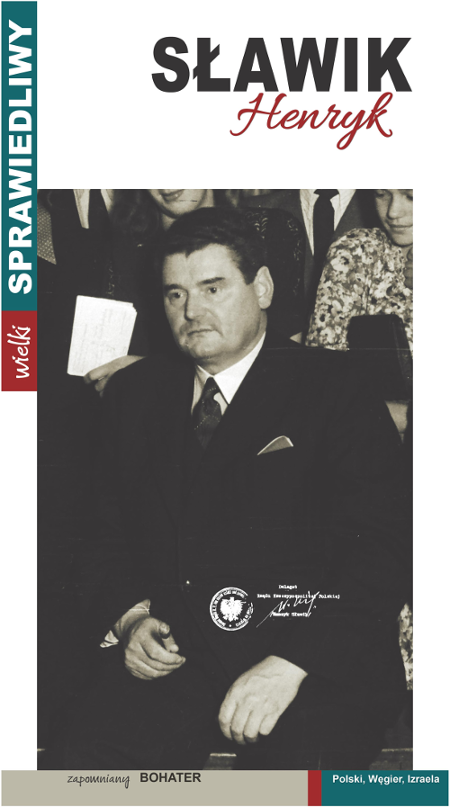
The exhibition tells the story of an extraordinary man whose effort and huge dedication saved several thousand Polish Jews sentenced to extermination by the Germans.
After the outbreak of World War II in September 1939, about 100,000 Poles managed to get to Hungary, where thanks to the favor of the Hungarian government, they could join the newly armed forces created in the West. Jozsef Antall senior was appointed as a contact liason with Polish refugees from Hungary, and Henryk Sławik became the chairman of the Polish Citizens’ Committee for the Protection of Polish Refugees in Hungary and at the same time a delegate of the Ministry of Social Welfare of the Polish government in exile. Together they made an effort to rescue the doomed Jews.
In the orphanage created in Vac, Sławik sheltered a hundred Jewish orphans from Poland, officially claiming that they were the children of Polish officers. He forged documents and taught them Catholic prayers. He ordered the apostolic nuncio to visit not to arouse suspicion.
According to information posted by the Yad Vashem Institute, over five thousand people survived thanks to Sławik. Unfortunately, Sławik was denounced and handed over to the Germans who sent him to the Mauthausen-Gusen camp, where he was murdered in 1944. Even while being tortured, he did not release his friend and colleague – Jozsef Antall.
In 1990 Henryk Sławik was honored with the title of Righteous Among the Nations and in 2010 President Lech Kaczyński posthumously awarded him the Order of the White Eagle.
The author of the exhibition is Grzegorz Łubczyk, a Polish philologist and journalist, in the years 1997–2001 the Polish Ambassador in Hungary, author of many books and documentary films.
The exhibition was created with the support of the Museum-Castle in Łańcut. Financial support was provided by the Marshal’s Office of the Podkarpackie Voivodeship.
Temporary Exhibition
PRZEMYŚLANIE SAVING JEWS DURING EXTERMINATION 18 June 2016 - 17 July 2016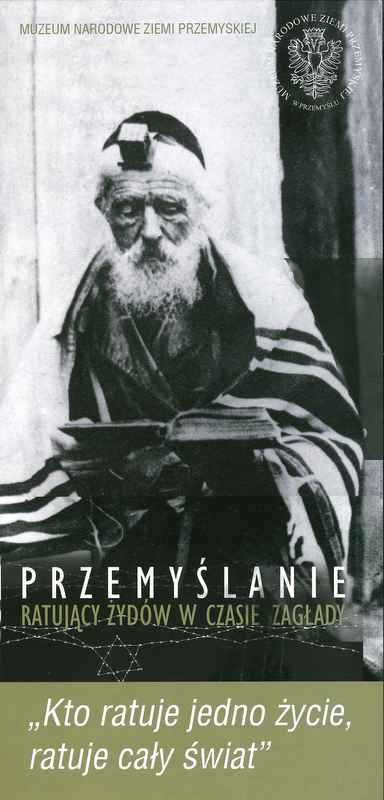
“Who saves one life, saves the whole world” – such a motto accompanies the new temporary exhibition dedicated to Przemyśl Righteous, the exhibition available from last Saturday to mid-July this year at the Museum of Poles Saving Jews in Markowa.
During the Second Polish Republic, Jews were the second social group after Polish that lived in a multicultural and multi-religious city of Przemyśl. This coexistence was interrupted by the outbreak of World War II. The first repressions and executions of Jews took place shortly after the German army entered the city in September 1939. In mid-July 1942 the Germans created a ghetto, where about 22,000 Jews were concentrated on a relatively small fragment of the city. Already at the end of that month the occupation forces began liquidation actions, such as mass executions in the Przemyśl Grochowce, and deportations to the Bełżec camp. Finally the Germans liquidated the ghetto in the autumn of 1943.
Only 500 Przemyśl Jews survived the Holocaust by hiding in nearby forests, finding shelter with local people or changing their identity thanks to false “Aryan” documents. They survived this terrible time thanks to the Righteous – Poles and Ukrainians who, despite the threat of losing the lives of their entire families, did not hesitate to help. Thanks to historical research, it was possible to reconstruct the list of names of several dozen residents of Przemyśl, whose determination and courage helped the members of the city’s Jewish community to survive.
The exhibition was created with the support of the National Museum of the Przemyśl Land in Przemyśl. Financial support was provided by the Marshal’s Office of the Podkarpackie Voivodeship.
Temporary Exhibition
“POLES SAVING JEWS DURING WORLD WAR II” 17 March 2016 - 12 May 2016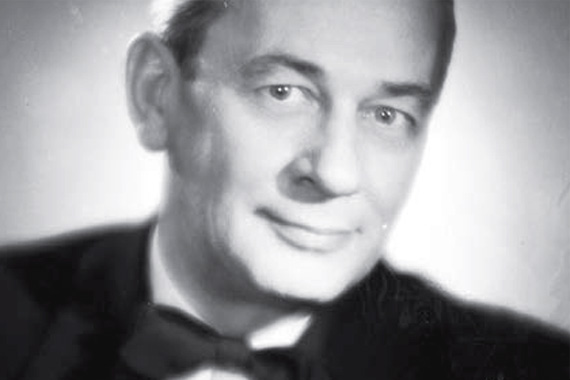
The exhibition is devoted to the help that was offered by Poles to Jews in the occupied Poland. It is illustrated by documents and photographs showing how Polish people were aiding Jews who were condemned to annihilation (the measures included smuggling food and medicines into the ghettos and forced-labour camps, arranging hideouts for fugitives at Polish homes, helping to obtain the documents necessary to survive on the so-called Aryan side, facilitating the flight of Jews outside the occupied Poland). Also, it highlights the role that was played by the “Żegota” Council to Aid Jews, under the auspices of the Polish Government in Exile and its Delegation for Poland. Its representatives included, i.a. Irena Sendler and Władysław Bartoszewski.
The curator of the exhibition and author of the texts is Elżbieta Rączy, PhD
The exhibition was prepared by the Institute of National Remembrance within the research project “Extermination of Jews in Poland”


